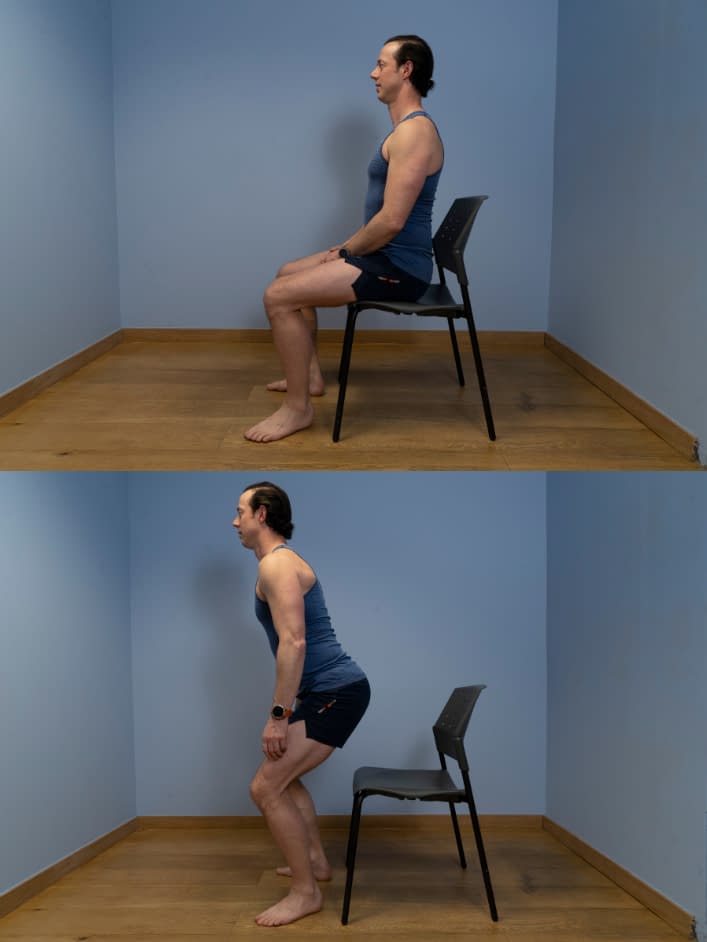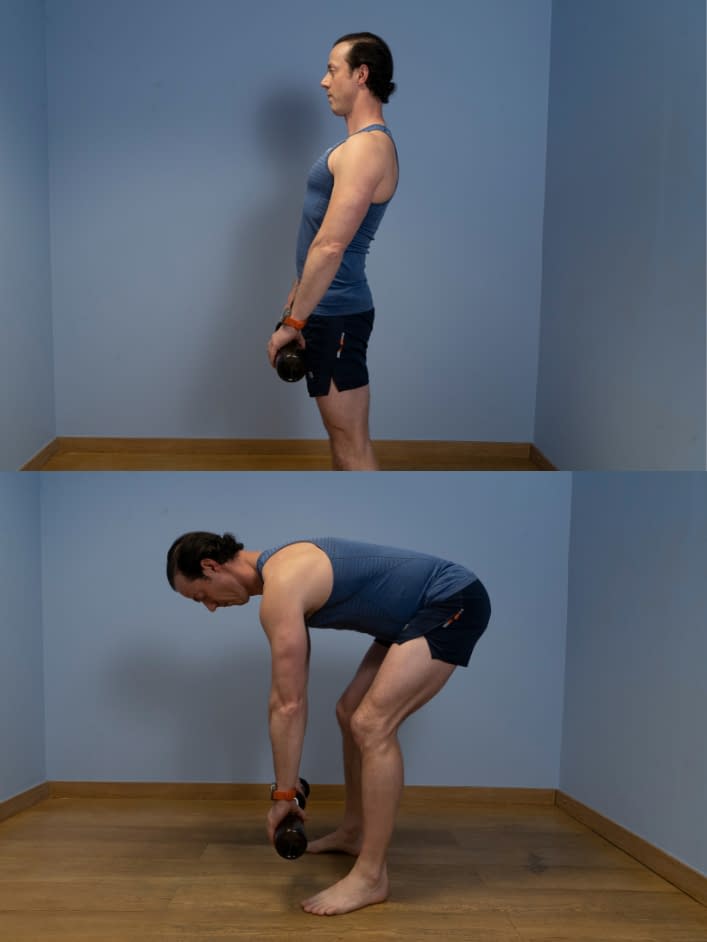Complex Regional Pain Syndrome Early Exercise Programme
Aim to perform this programme a minimum of once per day unless prescribed otherwise. As with any new exercise, start slowly (repetitions as able) and build up as you are able within the guidelines below.
Pain should not exceed 3/10 whilst completing this exercise programme.
1. Sit to stand
- Sit in a stable chair that is at a convenient height for you to rise from.
- Shuffle forward in the chair so that your feet are directly under your knees.
- In a controlled manner, initiate a standing motion by shifting your weight forward and pushing down through your feet.
- As you rise, transition to standing upright by pushing your hips forward.
- Then, slowly lower yourself back down towards the chair by pushing your hips backwards and controlling the movement using your thigh muscles.
- Gently touch your buttocks on the chair before repeating.
2. Deadlift
- Stand upright with feet hip-width apart, a slight knee bend and a weight held in both hands.
- Engage the abdominal region and in a controlled manner, bend forward at the hips trying to keep your back straight. Do not let your knees bend further. Let your hips press out backwards.
- Go down as far as you feel comfortable or until your back starts to round.
- Come back up to standing and repeat.
3. Child’s pose stretch
- Start in a kneeling position.
- From here reach your hands out as far in front of you as possible on the floor with one hand on top of the other.
- Now sit slowly backwards onto your heels until you feel a stretch in your back.
- Note: If you cannot kneel then this exercise can also be done in standing with your hands in front of you on the kitchen table or worktop.
- Hold for 20 seconds relaxing into the position.
We recommend consulting a musculoskeletal physiotherapist to ensure exercises are best suited to your recovery. If you are carrying out an exercise regime without consulting a healthcare professional, you do so at your own risk. If you have any concerns whilst completing these exercises, please contact a healthcare professional.
More Plans
In this phase focus will move to more functional exercises aimed to increase overall tolerance for movement. This should not exceed any more than 2/10 on your perceived pain scale.
- 0
- 1
- 2
- 3
- 4
- 5
- 6
- 7
- 8
- 910


